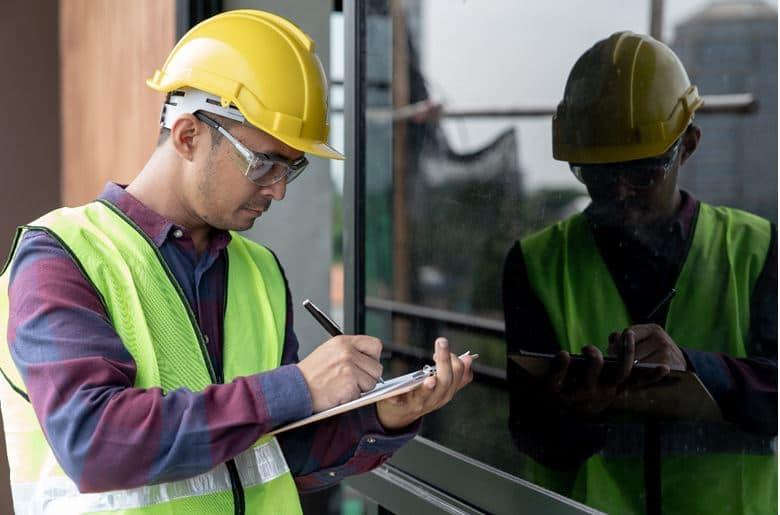Do your safety inspections keep finding the same deficiencies over and over again? Do “unsafe conditions” rather than systems or process safety issues dominate your findings? Are your safety inspection issues assigned to the safety staff rather than the actual problem owners? Do corrective actions often fall through the cracks or take excessive time to fix? Are your inspections a safety staff responsibility that excludes worker and manager participation? Do your safety inspections address only non-compliance rather than the root cause? Do your safety inspections focus on space rather than significant work activities? If you answer yes to more than one of these questions you may, at best, be wasting your valuable and finite time on nonproductive or, at the very least, sub-optimal inspections.
In general, I prefer safety inspections or assessments that seek to gain an understanding of how safety work is performed rather than inspections that are more compliance-focused. I will have more to say about assessments in future writings. Inspections have an important safety role, however, and we should ensure that when they are performed, we get the utmost value for our effort.
What Are Inspections?
The National Safety Council (NSC) Accident Prevention Manual defines inspections as activities designed “to locate and repair existing and potential unsafe conditions or activities.” In short, inspections are performed to determine if workplace conditions and worker behavior are compliant with ES&H regulations, standards, and good practices.
Safety inspections are a time-honored activity in the safety profession and many safety practitioners pride themselves on their encyclopedic knowledge of rules and regulations and their ability to “write up” long lists of deficiencies during their inspections. OSHA’s Voluntary Protection Program (VPP) even requires quarterly inspections (monthly for General Industry and weekly for Construction) covering the entire worksite covered. Additionally, most behavior-based safety efforts are essentially inspections – where pre-defined “critical” behaviors are determined compliant or non-compliant via worker observations.
Safety inspections can play a valuable role in determining the state of safety compliance in your organization. Although most inspections do little to address root causes for deficiencies, it is important for companies to have an understanding of their state of compliance, especially in areas of significant regulatory interest. Inspections also provide a sense of security that critical safety aspects (e.g., valve alignments in nuclear power facilities) are correctly addressed. In some high consequence operations, critical safety inspections are conducted by two individuals (second party verification). A second independent inspection (Independent Verification) may also be necessary for additional assurance that critical parameters are met as intended.
Some Suggestions to Make Your Inspections More Effective
- Look a little deeper. Rather than merely addressing noncompliance, ask why some act or condition is noncompliant. For example, workers not wearing appropriate PPE could be due to lack of availability, discomfort, and/or weak supervision.
- Get the workers and managers involved. Inspections are an excellent way to engage the workforce and to give managers an opportunity to take responsibility for the safety of their work.
- Inspect work, especially extremely hazardous operations, rather than solely inspecting workspaces. Inspectors have limited time for conducting inspections, so they should use it in areas of greatest impact.
- Make sure you have a reliable system for tracking and closing inspection findings that relevantly assigns issues rather than automatically handing them off to the safety staff.
Conclusion
Comprehensive feedback is necessary to truly understand where you are in your safety journey. Well-conducted inspections go a long way, but traditional compliance inspections that target conditions and the newer behavior-based observations programs that target behavior compliance can’t be the end of the story. In too many cases, excessive resources and finite safety energy is put into compliance-based safety inspections and observations, at the expense of an effective, risk-based assessment process. The overall success of safety efforts must be evaluated, not merely the state of compliance. Safety assessments can help fill that gap and future articles will discuss what they are, why they are important, and how to conduct them effectively.
For more details: Click here & Contact SafetyStratus Now
AUTHOR BIO

Mr. Loud’s over 40 years of safety experience includes 15 years with the Tennessee Valley Authority (TVA) where he served as the supervisor of Safety and Loss Control for a large commercial nuclear facility and later as manager of the corporate nuclear safety oversight body for all three of TVA’s nuclear sites. At Los Alamos National Laboratory he headed the independent assessment organization responsible for safety, health, environmental protection, and security oversight of all laboratory operations.
Mr. Loud is a regular presenter at national and international safety conferences. He is the author of numerous papers and articles. Mr. Loud is a Certified Safety Professional (CSP), and a retired Certified Hazardous Materials Manager (CHMM). He holds a BBA from the University of Memphis, an MS in Environmental Science from the University of Oklahoma and an MPH in Occupational Health and Safety from the University of Tennessee.



